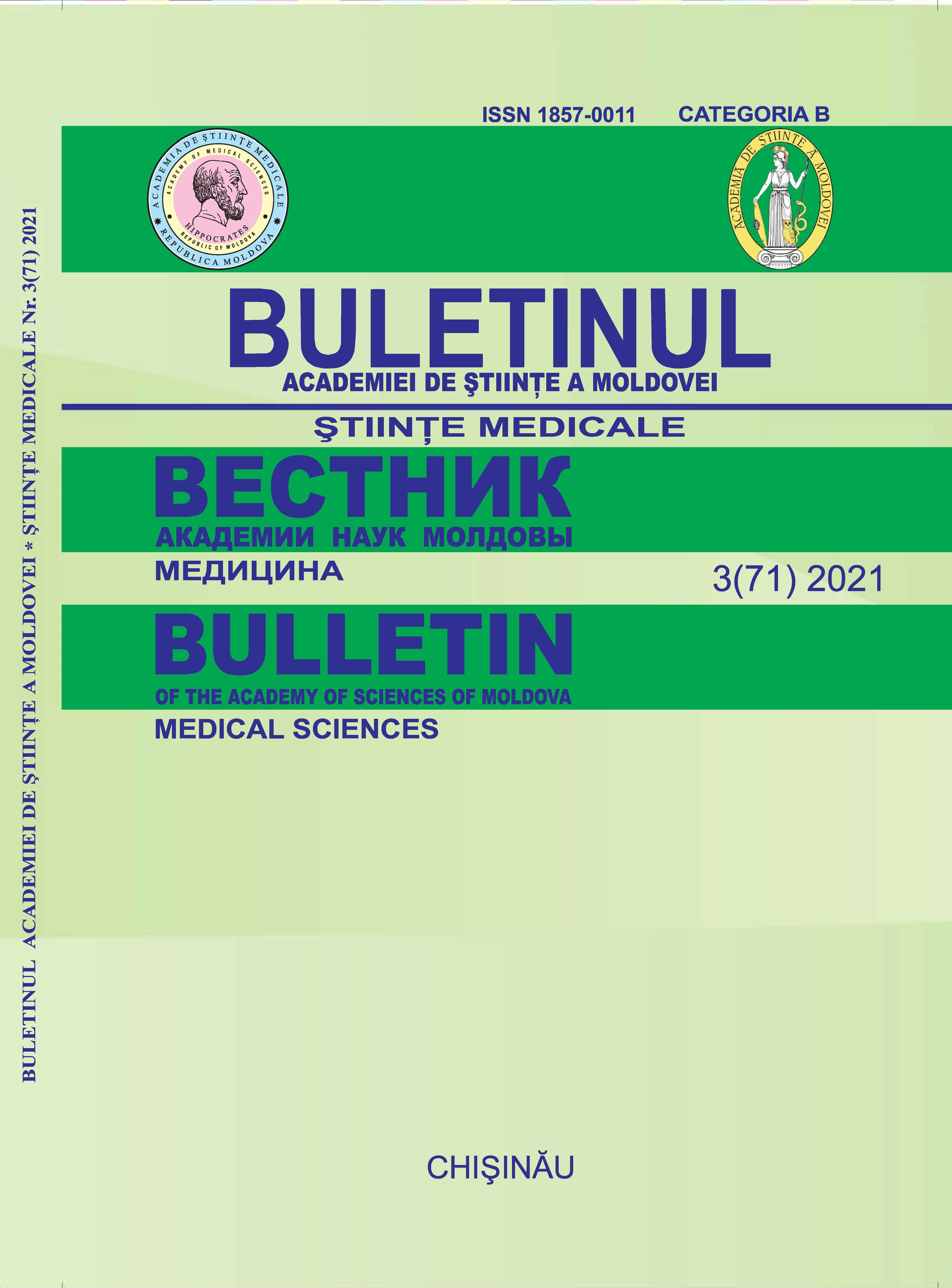Risk factors, clinical course and prognosis of patients with non-aneurysmal and non-traumatic subarachnoid hemorrhage.
DOI:
https://doi.org/10.52692/1857-0011.2021.3-71.01Keywords:
non-aneurysmal subarachnoid hemorrhage, risk factors, Hunt-Hess scaleAbstract
Subarachnoid hemorrhage (SAH) accounts for about 2-7% of all strokes. In 85% cases SAH is caused by an aneurysmal rupture, 10% of SAH are non-aneurysmal, non-traumatic, and 5% of SAH is due to other causes. The risk factors with a major resonance are arterial hypertension and smoking.The purpose of the study was the analysis of the risk factors, clinical course and prognosis in patients with SAH, which was not determined by the rupture of aneurysm or craniocerebral trauma.Methods: The patients were collected during the hospitalization in the Institute of Neurology and Neurosurgery “Diomid Gherman” between 2019 and March 2021. The diagnosis was confirmed by brain CT, CT angiography and cerebral MRI. In this study, for the clinical, paraclinical evaluation and prognostic were used the Hunt-Hess, WFNS, mFisher, mRankin scales.Results: The average age of the 23 research patients is 59,85 years old. Risk factors were assessed: hypertension – 20,smoking – 3, diabetes – 2, obesity – 3, dyslipidemia–2, COVID-19 – 2, autoimmune diseases – 2. The patient’s prognosiswas determined according to the scales (medial score): Hunt-Hess grade 2 (2,39), WFNS grade 1-2 (1,78), mFisher grade1-2 (1,82), mRankin score 1-2 (1,73), 5 patients – developed vasospasm, 2 patients – died.Conclusions: SAH non-aneurysm and non-traumatic, has an almost equal gender distribution, has developed in middle-aged adult, the most common risk factor being arterial hypertension. Compared to women, men with non-anevrismaland non-traumatic SAH presented several associated risk factors, but at the same time they had good clinical results, lowcomplication rates and favorable prognosis.
References
Konczalla J, Platz J, Schuss P, Vatter H, Seifert V and Güresir E et all. Non-aneurysmal non-traumatic subarachnoid hemorrhage: patient characteristics, clinical outcome and prognostic factors based on a single-center experience in 125 patients. BMC Neurology 2014, 14:140.
Konczalla J, Kashefiolasl S, Brawanski N, Senft C, MD, PhD, Vatter H, Seifert V and Güresir E et all. Increasing numbers of nonaneurysmal subarachnoid hemorrhage in the last 15 years: antithrombotic medication as reason and prognostic factor? Clinical article J Neurosurg 2016, 124:1731–1737.
Maher M, Schweizer TA, Macdonald RL. Treatment of Spontaneous Subarachnoid Hemorrhage, 2021 Stroke is available at https://www.ahajournals.org/journal/str
Mensing LA, Vergouwen MDI, Laban KG, Ruigrok YM, Velthuis BK, Algra A, et al. Perimesencephalic hemorrhage: a review of epidemiology, risk factors, presumed cause, clinical course, and outcome. Stroke. 2018; 49:1363–1370.doi: 10.1161/STROKEAHA.117.019843
Bakker NA, Groen RJ, Foumani M, Uyttenboogaart M, Eshghi OS, Metzemaekers JD, et al. Repeat digital subtraction angiography after a negative baseline assessment in nonperimesencephalic subarachnoid hemorrhage: a pooled data meta-analysis. J Neurosurg. 2014;120:99–103. doi: 10.3171/2013.9.JNS131337.
Downloads
Published
Issue
Section
License
Copyright (c) 2022 Bulletin of the Academy of Sciences of Moldova. Medical Sciences

This work is licensed under a Creative Commons Attribution 4.0 International License.



